Q&A with Olympus President Haruo Ogawa and Planning Manager Eiji Shirota: After the E-M1, what’s next for mirrorless?
posted Thursday, October 24, 2013 at 3:35 PM EDT
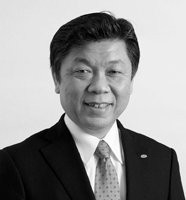
President
Olympus Imaging Corp.
Last month, Olympus launched a new flagship for its OM-D mirrorless camera line. The pro-friendly Olympus E-M1 is the company's first mirrorless model with on-chip phase detection autofocus, and it serves as a stepping stone to mirrorless for photographers shooting the company's earlier Four Thirds digital SLRs. Alongside the launch of the OM-D E-M1, Imaging Resource publisher Dave Etchells met with Olympus Imaging President Mr. Haruo Ogawa and Planning Manager Mr. Eiji Shirota, to get their perspective on what the new camera means for Olympus shooters, and what's next for the mirrorless camera market.
Dave Etchells/Imaging Resource: From a business standpoint, the camera market has three fairly distinct segments – pro, advanced amateur, and consumer. How does Olympus see those three markets and how do you plan to uniquely address them?
Haruo Ogawa/Olympus Imaging Corp.: As you know, Canon and Nikon have a large market to share in the DSLR category. Back in 2007, seven million units had been shipped. At that time, the demographics was late fifties and males were 90% of the total market. As the leader of Olympus, I thought that I needed to do two things at that time. So with the then-current market environment, Olympus could not do the same thing as others, so Olympus had to capture a new segment, new demographics. That was younger generation and the female demographic. But in 2012, the total shipment quantity was 20 million units.
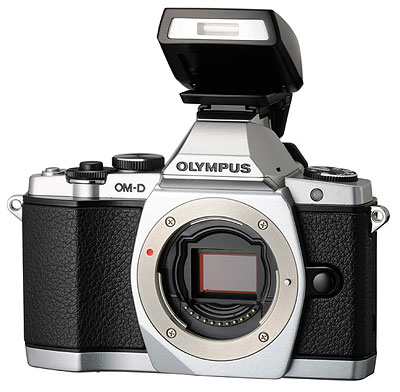
DE: 20 million total interchangeable lens cameras?
Ogawa: Yes, including mirrors. [Ed. note - that is, including both mirrorless and DSLRs] Now, the average age is mid-40s and the percentage of females went up to 30%. This is thanks to, we believe, Olympus introducing the Olympus Pen. That contributed to the significant change in the demographics. (By the way, out of 20 million units, four million units were mirrorless or CSC.)
DE: Four million, out of 20?
Ogawa: Yes.
DE: Ah, so about 20%.
Ogawa: Yes, the rest, over 16 million units, were mainly SLR. So the next step for Olympus is to shift to those 16 million [DSLR users] to come back to Olympus. The OM-D would take that role. Because of the launch of the OM-D E-M5, high-end amateur photographers are really paying attention to what we’re doing now.
DE: That was a very strong product. Our readers really liked that a lot.
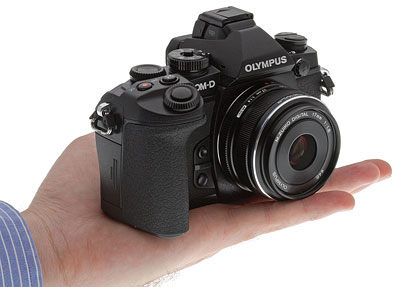
Ogawa: However, the professional photographers were not really satisfied because of the lack of professional lenses. One of the unique propositions of the new E-M1 is that you can use the [original] Four Thirds lenses, which includes many professional lenses, which is the biggest contribution. Referring to your question, for professional and very high-end amateurs, we will be offering E-M1 and for middle or low high-end amateurs, we’ll be offering E-M5. And then we have the Olympus PEN for the new and…
DE: PEN is the consumer side.
Ogawa: Yes, PEN is the consumer side. This is the strategy for our product planning.
DE: One thing in the US market is that a lot of amateurs that might be stepping up to an interchangeable lens camera, when they think of advanced camera, they just think "DSLR." How are you working to overcome that bias? To my mind, mirrorless makes much more sense for many of those people, but how do you educate them?
Ogawa: When we think about SLR, we would think about the professional sports photography, like sports games, the Olympic games, etc. You see many of Nikon, Canon big lenses [at those kind of events]. My intention is not to seek for that direction. The value proposition Olympus wants to provide is a small, compact body, portability, and the ruggedness of the camera… dust-proof, freeze-proof. And also, image quality, thanks to high quality optics. So where do we need such cameras? It is probably what we call a "field camera". Anywhere on the planet where there are severe shooting environments, you can use our camera. You can use our camera in any type of shooting circumstances. As I presented today [in a presentation to the US press at the E-M1 rollout event], there are many issues on this planet. War, poverty, disasters, so many things. In these kind of situations, you cannot bring a big, gigantic system. So our direction is to provide the solution in the form of this camera. So our marketing message for the OM-D camera is that its value proposition is suitable for those types of needs and wants.
DE: I was actually thinking a bit more on the consumer side, where people are stepping up from point & shoots. A lot of pure consumers think, “Oh, an interchangeable lens camera has to be an SLR.” So I was wondering about positioning and how you make the case and how you present the PEN to those people.
Ogawa: Once again, with the Olympus PEN launch, Olympus was able to capture the young and female demographics. This type of user has two directions; to go for more professional devices, or to go for style. The more unique shooting style, I would say. So in case of the Olympus PEN, we have Olympus PEN E-P5. With the E-P5, they can step up while keeping the shooting style. However, they can still use the various lenses. The other style would be using the viewfinder. Then they probably would like the camera with a grip, so then those customers would go to the OM-D direction. So the OM-D has two roles – step up from PEN and then to shift from other manufacturers. There are two OM-Ds [to cover these two markets].
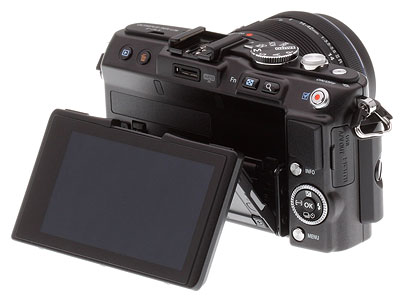
DE: I see. So you see the attraction of the PEN series being the shooting style, using the LCD on the back. Interchangeable lenses and much better image quality, but the same experience for people as using the point & shoots they're stepping up from.
Ogawa: Right.
DE: For the step up consumers, how big an issue is the interchangeability of the lenses? I know that a lot of beginning users just get the kit lens and may not go further. Do you see people buying additional lenses, that are in that step up category?
Ogawa: Those users are not satisfied with the image quality of our point and shoot camera and those from some other companies, or from smartphones. That’s one factor. Especially in the case of night scene or in macro photography, these users have difficulty in capturing satisfactory images. One thing that we have to communicate is that the Olympus PEN cameras can overcome those issues. I believe that most of the users understand that interchangeablility is a good thing for photography. I see the psychological barrier for those step-up users, using the interchangeable lenses, they think doing so is somehow difficult.
One important communication for Olympus PEN is to give the impression that you can still take a photo in the same way as you did with your point and shoot camera, but you’re using the interchangeable lenses with superb image quality. So probably now you can understand how the original OM-D and the PEN are completely different, intended for different markets.
DE: Yes, that makes it clear that we're talking about "step up" versus "step across."
Ogawa: That’s right.
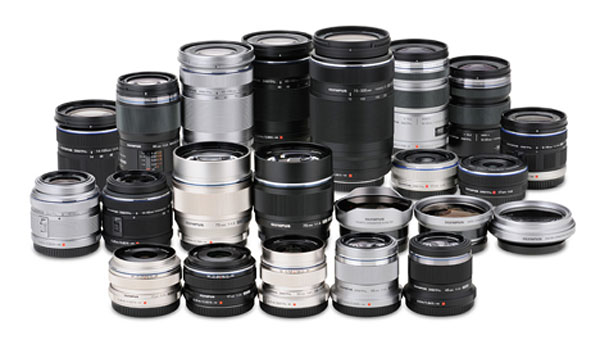
DE: A big question, it seems like Olympus has been very focused on still image quality, and video has somewhat taken a secondary role. What is your vision and strategy for video within both the PEN and OM-D lines?
Ogawa: It’s true that we have been focusing upon the still image. The thought was that the need for sharing of still images is really big, so therefore we should put our focus on still imaging.
DE: Ah - So there’s more sharing of still images, hence that's where you focused your attention.
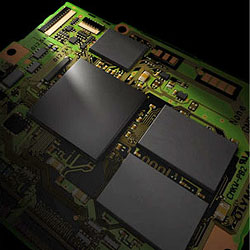
Ogawa: Yes. However, with the development of output devices like 4K TVs, we probably could say the same thing about movies as well, for the future. We are also preparing for that future as well, specifically movies. I believe that the TruePic VII processor we’ve newly developed for the E-M1 will have much better quality and performance than the competition.
The [TruePic VII] chip is very small and the power consumption is very low. However, image quality is very, very good. I can say that it is the best [image processing] engine in the marketplace. Now we’re working on the next generation engine as well. For that next generation engine, we are expecting that movie sharing will be the new demand coming. So we are prepared for that.
When we look at today’s movie sharing, social networking or websites like YouTube and some others, perhaps today's OM-D movie quality is good enough. So I believe that movie quality will matter more when 4K TV penetration becomes really high. Then we have to have our device ready for it.
DE: You’re very focused on 4K TV being sort of a threshold, when high quality video will become more important.
Ogawa: Infrastructure of the output devices is very important, so in accordance with the change in the infrastructure situation, we have to flexibly change our strategy.
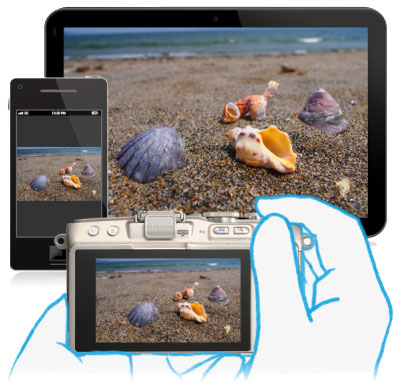
DE: I see. You mentioned sharing, and that’s obviously very important today. How does Olympus see cameras coexisting with smart devices, smartphones and tablets in the future? Sony recently made a very bold move with their lens-style cameras although the user interface for the camera functions could be better. How does Olympus intend to coexist with smartphones and smart devices?
Ogawa: We believe that the environment where people are sharing images wirelessly is already here, therefore we included a Wi-Fi chip in the PEN E-P5 and the OM-D E-M1. So today’s strategy is that our cameras have the ability to transfer images to smartphones, so that the user can use those images for whatever he or she wants to do; sharing, editing. Probably you could define the superiority in our position in terms of image size and the way we transfer the images. We focused upon ease of use and how seamlessly and smoothly the user can share those images. So we do believe that our solution now is better than others. Yet I believe that for the next generation, there is a need or demand to directly upload images to the cloud from the camera. We are also studying that option as well.
As smartphone users are increasing, there are also many people not satisfied with smartphone image quality. I believe that the device, the step up from smartphones will be mirrorless or CSC. [Ed. note: Compact System Cameras] So we have been successful in removing a barrier between SLRs and compact cameras. Now, we’d like to come up with the solution to eliminate the barrier between smartphones and mirrorless cameras. We need to have a solution for a smartphone user to smoothly use a mirrorless camera. So now we’re working on that.
DE: You spoke in terms of the camera uploading directly to the cloud. Is your vision more that the camera will become the primary interface for people uploading their images, as opposed to using the user interface on the smart device?
Ogawa: In the short term, I believe that camera, smart device and the cloud, will be the solution for the user. For the mainstream, the solution will be on the smart device.
But a heavy user like those who takes a lot of photos with an SLR, it takes time for him or her to transfer the images from SLR to smart devices, and then to the Cloud. So I’m anticipating the hidden need for those heavy users would be while he or she is taking photo, the image is uploaded into the cloud automatically. So in the mid-term, that kind of trend will increase.
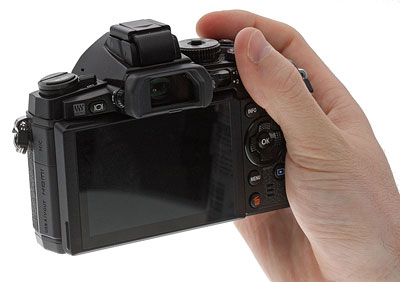
DE: Our editors are very excited about the M1. I wouldn’t be surprised if the young gentleman that’s with me tonight -- he’s a Canon shooter, but he’s really looking at the M1. He’s looking forward to writing about it, and I wouldn’t be surprised if he ends up buying one.
Ogawa: In the film era, the form factor used to be small, but in the digital era it became really big, huge. But with the OM-D, people will see the size going back to the film era.
DE: Yes, it’s really like the original OM you know, the camera is very compact, very nice.
Ogawa: It’s very important, so that people can carry the camera around in the various shooting environments. For example, journalists going to the place where the conflict is happening. You cannot bring the gigantic camera with you.
DE: Yeah! Well, you mentioned you have... not just the 12-40mm, you also have a 40-150mm f/2.8. So that’s like an 80-300 f/2.8, but much, much smaller though.
Ogawa: Right.
DE: I was telling the young man with me tonight that… I mean, I don’t need to buy a camera because cameras are all over the place in our lab. There are too many cameras. (laughs) But if I was buying a system now, I really think I would go with Micro Four Thirds. You know, a camera like the M1 and then a few very good quality lenses.
Ogawa: In the past, when you thought about a car, everything was about speed and how many CCs, right? But now, everybody’s talking about the miles per gallon, right? And the efficiency. With the E-M1, we want to make a similar change in the game.
DE: There’s a gentleman who writes for us occasionally, he’s a professional extreme sports photographer. He’s in the Seattle area and he wrote about the Sony A99 but he did a very, very nice video about the E-M5, and him using it professionally. He loved the camera, he just really wanted more buffer depth. I think the E-M1 has maybe twice as much, but I’m wondering why not four times as much if you’re really going for the professional market.
Ogawa: I think we will be hearing [other such comments] from professional photographers more and more you know, after launching the E-M1. So we will take those into account when we develop the plan for the new product.
DE: So perhaps the next product might have an even deeper buffer.
Ogawa: Yes.
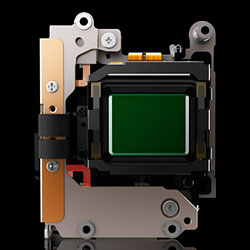
DE: We have a number of questions about the E-M1's hybrid autofocus system. It seems that the hybrid aspect (that is, the on-chip phase-detect pixels combined with contrast-detect AF) only works with the original Four Thirds lenses. With Micro Four Thirds lenses it only uses contrast-detect. We're wondering why that's the case.
Ogawa: First of all, in our testing, our contrast AF is faster and more accurate than phase detection, especially for fast lenses with large apertures and shallow depth of field, where phase detection has many errors. There's a general perception that contrast AF is slow. However, in our case, contrast AF is very fast. It is due to a parallel algorithm. Probably Mr. Shirota may touch upon this from an engineering background. But that’s the short answer.
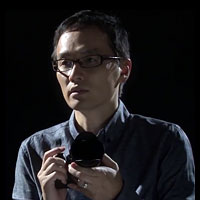
Planning Manager
Olympus Imaging Corp.
Eiji Shirota/Olympus Imaging Corp.: When you mount a Micro Four Thirds lens on the M1 body, for single autofocus it will use contrast auto focus. However, for continuous autofocus, it will use a combination of the phase detection and the contrast autofocus. So we will be supporting the contrast auto focus system in the continuous auto focus mode.
DE: I see. So single AF where you want the most precise focus uses just contrast, and then continuous AF, where you need to know the direction something’s moving, it uses both?
Shirota: Yes, your understanding is correct.
DE: Mr. Ogawa mentioned that contrast detect is more accurate than phase detect. That’s certainly the case when you have a separate phase detect sensor, and the PD sensor might be out of position. But I was surprised that when you have phase detect elements on chip, PD is actually still less accurate than contrast detect even though they’re right on the same chip as the imaging pixels.
Shirota: Yes, comparing contrast auto focus and phase detection auto focus with a separate sensor, the phase detection is inferior in terms of accuracy. However, with on-chip phase detection, that inferiority will go away. It’s better in terms of accuracy compared to this conventional way.
DE: One of the characteristics of phase detect autofocus is the base line, the separation between the two sets of sensors. With a conventional separate phase detect sensor, you have a fixed baseline. With PD on the imaging sensor, that restriction should go away . On the M1, when you have a very wide aperture lens, can any of the AF locations have a longer baseline?
Shirota: For on-chip phase detection, the separation distance issue has been overcome.
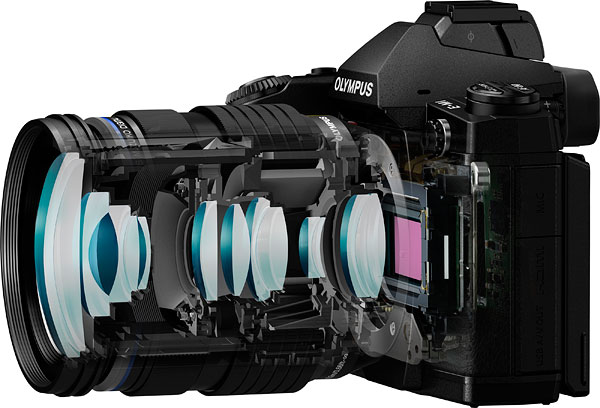
DE: So with the on-chip PD, you are able to vary that separation depending on the aperture. So with a very large aperture, you can use a large separation?
Shirota: This on-chip phase detection doesn’t have any disadvantage from a wider aperture or brighter lens. Regardless of whether the lens is brighter or dimmer, that has no relation.
DE: So the separation is constant regardless of the lens aperture?
Shirota: That’s true.
DE: I see. That may answer my other question. I was coming back to the issue of contrast detect versus phase detect, and the fact that in a single shot mode, it’s using contrast detect. I wondered why, if we eliminated the position error with phase detect being on chip, was there still a preference for contrast detect? Does it give you better sensitivity in low light? Better accuracy in low light? Or is it that, even though they’re now on the same chip, contrast detect is still more accurate than phase detect? It seems there’s a preference for contrast detect -- I want to understand why that preference is there?
Shirota: We have achieved speed and accuracy with contrast AF, and we have proven that by deploying that technology in the Micro Four Thirds system.
DE: So it’s a situation where you have that technology, it works very well, so there’s no need to do something different.
Shirota: That’s right.
DE: It sounds like, when using a Four Thirds lens, the phase detect is still being used even for single shot. Does that have to do with the dynamics of the lens and overcoming the greater mass that there is to move there?
Shirota: When we use contrast AF for Four Thirds lenses, the wobbling effect, because of this lens’ characteristics will take a little more time compared to the Micro Four Thirds lenses.
DE: Ah, I think I see: The mechanics of the Micro Four Thirds lenses are very tight and so they stabilize quickly. Whereas Four Thirds, there’s more mass to move, and so it would tend to hunt back and forth more with Contrast Detect?
Shirota: Yes. And the Micro Four Thirds lenses use a Voice Coil Motor which reduces that wobbling effect.
DE: And what kind of focus motor do the Four Thirds lenses use instead?
Shirota: An ultrasonic disc motor, which is not so good for wobbling.
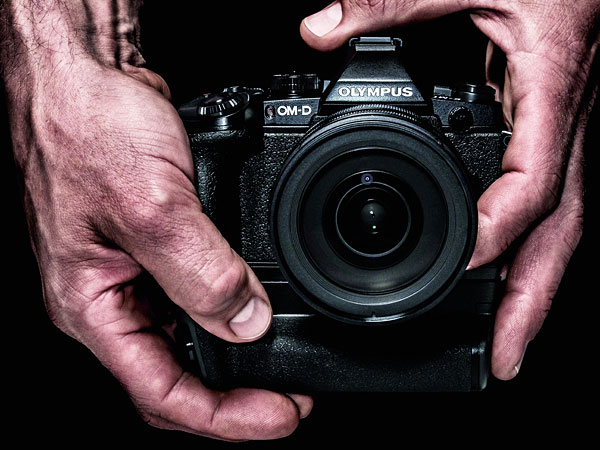
DE: Ah, I see. I’m curious what the engineering obstacles were that you had to overcome in designing the M1 to support Four Thirds lenses. We just touched on one of those. Were there others as well and what were they? What did that development look like?
Shirota: One of the challenges that R&D overcame was the handling, the balance between the body and the lens.
DE: You mean just the mass, the center of gravity?
Shirota: Yes, the center of gravity is one thing. The second was that, since we came up with Four Thirds lenses that were really sublime in terms of image quality, we wanted to maintain that image clarity, we came up with the body that was filterless, as well as implementing this Fine Detail Technology II which delivers the maximum capability of the optics, of the Four Thirds lenses.
DE: We found it interesting with the Fine Detail Technology II that you adapt the image processing to the specific lens, and the aperture being used. Can you give us any more details about that?
Shirota: With Fine Detail Technology II, we understand the characteristics of the lens performance itself. Our processing will adjust to compensate both the lateral chromatic aberration and the sharpness as well.
DE: I assume that that would only work with Olympus lenses or if you put in another brand’s Micro Four Thirds lens on the camera, will it also be able to adapt?
Shirota: For the alliance lenses, well, let’s say Panasonic and Sigma, etc - yes, it will compensate the lateral chromatic aberration only, but will not compensate the diffraction and the sharpness as well.
DE: Okay. And for the sharpness compensation, frequently the periphery -- the edges -- are softer than the center. Does it vary the processing depending on radial distance?
Shirota: For the center sharpness and the edges, the processor will check the balance of these.
DE: So it’s processed differently.
Shirota: Yes, it’s processed differently.
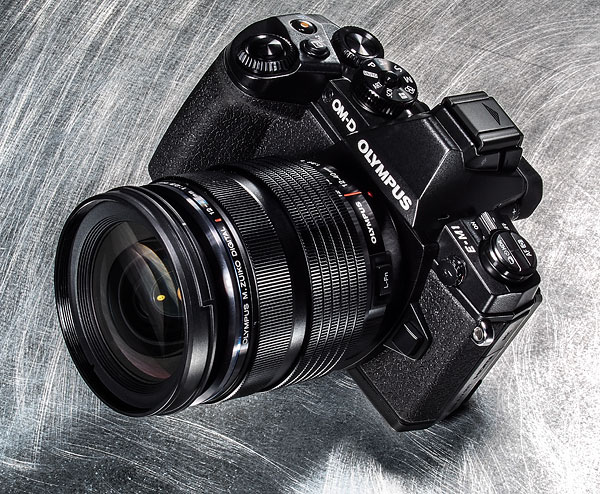
DE: Moving to the lack of the low pass filter and moiré removal: This is something that seems to be happening in the industry a lot now. A number of manufacturers are coming out with cameras without low pass filters. I’m concerned about that because in many, many situations, there’s no problem, but if you do have a moiré problem, it’s a bad problem and you really can’t get rid of it. So I’m curious about your view of that, and how completely do you think your post processing is able to actually eliminate moiré?
Shirota: R&D considered various ways that the moiré can happen. They scrutinized various situations. And since Olympus had come to an ideal way that in almost all situation the moiré would not appear, therefore, we made a decision to go filterless.
We have “proof shots” showing the comparison with the filter, and without the filter, to really challenge ourselves whether this solution we have come to is the right solution.
DE: You feel fairly confident, then.
Shirota: First, comparing with the APS-C competitors, in terms of sharpness, ours is superior. And comparing the M1 with full frame competitors, yes, full frame has an advantage in sharpness. However, in terms of our moiré reduction, we have an advantage.
We do have the proof to show you, even though we don’t have it now.
DE: Yeah, that’s very interesting that you actually looked at a number of situations that could cause the problem and addressed each situation in turn. We’ll be interested to see how the camera does in this respect in our testing.
I think we’re out of time. Thank you very much for your time, I really appreciate you spending so much of it with me! Very good to see you again, Mr. Ogawa san, and very nice to meet you, Mr. Shirota san.